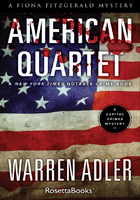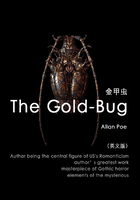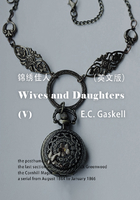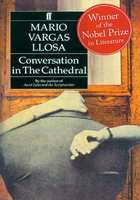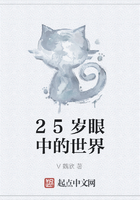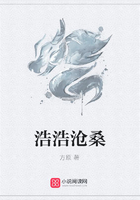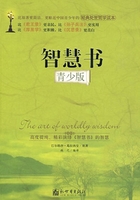One of the earliest lessons I learned as a communicator was the importance of credibility. I was working for the then 30,000-member SEIU District 1199 (WV/KY/OH) as a communications coordinator. It was my first job at a labor union, and I knew very little about the labor movement. I'd always considered myself an advocate for marginalized communities, so leading communications for a labor union seemed like a natural fit. Furthermore, I was committed to learning as much as I possibly could. What I lacked in technical skill was compensated by a desire to learn.
As I mentioned earlier, the union's then president, David Regan, hired communications consultant Dale Butland to add capacity to our communications efforts and to help me further develop my communications skillset. Butland was once press secretary for the late Ohio senator, John Glenn. He was also the first communications consultant I worked with. I would later learn that working with consultants is commonplace for many communicators. As such, learning to work effectively with consultants is critical to a communicator's success.
During that early relationship with Butland, I learned the benefit of asking questions rather than relying on him to do those things I didn't know how to do. I would watch him and try to learn by observation. My boss supported this approach as well.
Rather than relegate me to a behind-the-scenes role, Dave and one of his then vice presidents, Becky Williams (who was elected president of the union in 2008), instructed Butland to teach me everything from requesting and then participating in editorial board meetings to staying calm in the face of a crisis to thinking creatively about ways to generate media coverage.
Perhaps the most enduring lesson Butland shared was when he came into my office to discuss strategies for building mutually beneficial relationships with journalists. In a very serious tone, he told me if I didn't maintain credibility with reporters, I would be no good to the organization or the press. I would be useless.
As someone who cared deeply about the union members we represented, the thought of alienating the media and potentially being unable to tell the stories of working families was unbearable. I was desperate to please; the last thing I wanted to do was develop a reputation of being untrustworthy.
I quickly learned that being credible is about knowing which stories are newsworthy and which stories are not. One way to earn the unenviable title of novice is to develop a pattern of pitching stories that are of little news value. A critical point to remember is that credible public relations professionals can spot the difference between a story that is newsworthy and one that is not.
For the spokesperson or public relations staffer, being credible is also about being informed. This means having a baseline understanding of the reporters who cover the beats of interest to you as well as the more technical information about the issue you're pitching. Last, credibility is about being recognized for following through on your word: doing what you said you would do and not doing what you said you wouldn't. It's about being honest.
Communicators working for organizations with limited means: You will be happy to learn that being credible is one of the easiest communications principles to follow on a budget. It literally costs nothing. Keeping your word, knowing what's newsworthy, and being informed don't take anything more than your time and your integrity.
Keep Your Word
Obviously, as communicators, your word matters. Think about the oft-used technique known as the "embargo," which is an agreement to share information with the media with the understanding that it will be shared publicly only after an agreed-upon date. Before many entities release reports, they often share a preview copy with trusted reporters under an agreement that the reporter will not report on the material before the embargo is lifted. Both the reporter and the public relations professional are expected to abide by the embargo. Embargoes allow reporters to prepare their stories in advance of a major announcement or prior to the release of a report. Then, once the announcement is made, they can quickly publish their already-written stories on the topic.
I learned the hard way how not being clear on the terms of an embargo agreement can damage credibility. I was working for Advancement Project and was serving as communications lead on a campaign to combat overly harsh school disciplinary policies. I was pulled in at the behest of the parent and youth group Padres y Jovenes Unidos to promote a historic intergovernmental agreement between Denver Public Schools and the Denver Police Department that stipulated and limited the role of police in schools. The agreement held promise for reducing racial disparities in school discipline and reducing out-of-school suspensions. This was important because racial disparities in discipline and out-of-school suspensions decrease instruction time and increase the likelihood a student will drop out of high school altogether. In 2013, the Civil Rights Project's Center for Civil Rights Remedies at UCLA found that "reserving out-of-school suspension as a measure of last resort can lead to higher achievement and improved graduation rates."[10]
The agreement had all the trappings of a good story-unique, timely, and counterintuitive (a police department working with a community group)-and I wanted to secure national media coverage. In mapping my strategy, I opted to place the story with a national media outlet, one influential enough that if they covered it, other papers would follow suit. I decided to pitch the story and give first right of refusal to the Washington Post. The Post, in turn, decided to run the story on the condition I give it to them as an exclusive, meaning they would be the first to break the news of the agreement. Always ambitious, I continued to pitch the story but created an embargo for other media outlets. However, I wasn't transparent with them. I didn't tell them the Washington Post would be covering the agreement as an exclusive and that their stories would run a full day after the Post story ran. What a rookie mistake!
Think about the position this left the education beat reporters at the other media outlets. Some likely faced pressure from their editors who demanded to know why the Washington Post broke the story rather than them. I will never forget the call I received from reporter Nirvi Shah from Education Week, the industry paper for education (Shah now works for POLITICO). I had taken a day off from work and was visiting family when I received the call from Shah. The woman whom I had known as only friendly and warm called in a fury. She wanted to know why I made the decision to give the story to the Washington Post as opposed to Education Week and why I didn't tell her I had done so. She was highly upset and rightly so. I listened patiently to what felt like a never-ending phone call. I begged Shah not only for her forgiveness but for the opportunity to make it right. She was not easily appeased. I hung up the phone and began thinking about my options for getting back in her good graces and regaining my credibility.
First, I arranged a one on one between Shah and my boss at the time, Advancement Project's Judith Browne Dianis, who was a pioneer in the movement to end overly harsh school disciplinary policies. To make it worth Shah's time, I knew Browne Dianis would need to provide as-yet-to-be disclosed information on one of our campaigns. I remembered my organization hosted a two-day gathering of more than a hundred youth from across the country for an Action Camp, a space to allow young people to think through strategies for ending the school-to-prison pipeline and improving school culture. The school-to-prison pipeline is the patchwork of overly harsh school disciplinary policies and practices that funnel children (especially children of color, children with disabilities, and students identifying as LGBT) from the classroom to the criminal justice system. The gatherings were typically private sessions and not open to press. However, my relationship with Shah and Education Week was worth a departure from the rules. I got permission for Shah not only to join us but also to have access to all workshops and panels. When I presented the idea to Shah, I also promised her that I would identify youth who would speak with her and share their stories. The plan went perfectly.
Shah was the first reporter we welcomed into an Action Camp space, and she was the only reporter at the 2013 camp. In the end, I restored my relationship with her, scoring a front-page story in Education Week in the process. I was extremely lucky. Following my foray into disaster, I became determined to be more careful and forthright so as not to damage relationships with reporters or compromise my credibility. Use my experience as a cautionary tale!
Know What's Newsworthy
When seeking to promote your campaign or organization, look for elements of your work that are unusual, interesting, and unique. These are the elements that reporters use to determine what will be covered.
The media is not interested in telling a story that is uninteresting, essentially a story that won't appeal to their audiences. And as remarkable as the PR skillset can be, communicators are not magicians. We cannot magically make a story appear in print. An issue either has the trappings of a good story or it does not.
A good story begs to be covered. It includes items that provoke a second read or double-take or that inspire. Examples of good stories include those that coincide with current events, those that highlight a compelling personal narrative, and those that are counterintuitive. It compels you upon reading just the headline to want to know more. It answers the question "Why should I care?"
While the importance of having a newsworthy story is simple enough in theory, it's sometimes difficult to explain to non-communications professionals. Just because an issue is important internally doesn't make it a good news story. Anyone who's worked in communications for any length of time has been on the receiving end of a non-communications staff person claiming to have an issue that should be on the front page of your local or state paper. Similarly, most reporters, editors, or producers have been on the receiving end of a communications or public relations professional seeking in vain to convince them to cover something that isn't appealing. Just because you care doesn't mean the public will.
So how should communications staff respond when they've been ordered to generate media coverage for an issue? You respond by acknowledging your concerns and explaining to coworkers and higher-ups what constitutes a good story. Explain the other issues presently in the news cycle that may affect media coverage. Sort through the details of an issue to find the most compelling lede or angle and then use that in your pitch. The most important thing is helping your peers understand that communicators must answer the "Why should I care?" question for the media.
The "Why should I care?" answer isn't always obvious. It sometimes takes a bit of creativity to find (See Chapter 3). But sometimes a newsworthy story just falls into your lap, like this one: honor student, Kiera Wilmot, whom I had the pleasure of working with for several years, was arrested, expelled, and charged with two felonies for a science project gone wrong. In essence, she was expelled because of a passion for science. How's that for a lede?
Kiera created a makeshift volcano that did what it was designed to do: erupt. She proudly took it to school to show her teachers and peers. But instead of accolades for her accomplishment, what she got was handcuffs and an arrest record. Though no one was hurt and there was no property damage, the standout student was sent to the principal's office and put on a path to academic ruin.
Kiera's story seems counterintuitive. We don't typically think of honor students being in trouble, much less expelled and arrested. So that piece of information alone immediately caught reporters' attention. It was a story that naturally provoked curiosity and interest. If an honor student can be arrested and charged with felonies, what can we expect for other children?
Kiera's experience presented an opportunity to highlight for reporters the challenges with overly harsh school disciplinary policies and practices as well as disparities in school discipline. Her experience also helped to illustrate the challenges with police in schools.
After hearing of this young girl's experience, I was naturally heartbroken. I'm a mother and empathized with Kiera and her family. Sensing in her story a window to talk about school discipline, an issue that doesn't always get the attention it deserves, I reached out to Kiera and her mother to ask their permission in helping to share their story with the world. They agreed and a partnership ensued. I convinced my employer, Advancement Project, to feature Kiera in an animated video on the dangers of police in schools and harsh school disciplinary policies and practices.[11] Within twenty-four hours of posting the video, it garnered thousands of views on YouTube, Facebook, and Twitter.
I had previously spent months focused on publicizing the problems with the school-to-prison pipeline and overly harsh school discipline. Here was an opportunity to make real the anecdotes I had been peddling to education reporters. Now while the video was part of a much larger and higher-budgeted campaign, Kiera's inclusion didn't cost an extra cent. All it took was a well-honed sense that her story was counterintuitive and would appeal to reporters.
During this process, I learned another important lesson. Sometimes the timing of a story may make it less newsworthy. When we finished the video, I didn't have a news hook or a reason for releasing it. It didn't correspond to items in the news cycle; it wasn't timely. I knew it was a good video and would capture media attention if released at an opportune moment. As such, I held it. When Kiera's mother contacted me several months later to tell me Kiera would indeed graduate from high school, I knew my moment had come. Connecting the release of the video to Kiera's graduation created a timely news hook-reporters were already preparing graduation stories-and increased the likelihood that the media would report on Kiera's ordeal.
Even if you have the makings of a great story, current events may decrease the likelihood of your issue being covered. Think of the major events and themes that have dominated national headlines recently: the Sony hack, countless police shootings of unarmed African American men and boys, ISIS and other threats to national security, the Ebola and Zika outbreaks, and the 2016 presidential election. If you pitched a story to national or even local news on the day these or other major issues broke and your story was unrelated to these headlines, your coverage was likely adversely impacted. It's very possible that you pitched a newsworthy item, and perhaps under a different set of circumstances or at a different time, you may have received better coverage.
Again, each story you pitch should be tied to a specific news hook or an item that makes it relevant. For instance, pitching a story on famed civil rights leader Fannie Lou Hamer may be pointless if the story isn't pegged to the anniversary of an important event, such as Freedom Summer, of which she was a part; the birth of the Mississippi Freedom Democratic Party, for which she served in a leadership role; her birth; or her death. As enduring a civil rights leader as Hamer may be, you are unlikely to place an article about her out of the blue. Regardless of how talented a public relations professional you may be, there is only so much you can do without a legitimate news hook.
To capture a reporter's interest and increase the likelihood of coverage, answer the following questions:
Why is this story important now?
What makes your story or angle unique?
Why should anyone care?
Would the story be more appealing to one media outlet versus another?
Is the issue you're pitching the first of its kind?
Is the issue you're pitching the largest or most comprehensive sort of policy?
Remember, the goal of all of this is maintaining your credibility so you can effectively promote your organization's issues and campaigns in the future. You want members of the press to take you seriously. You do not want to develop a reputation for continually pitching non-news stories because that would lead to a lack in your credibility. When you reach out to members of the media, try to be as objective as possible. If you were not affiliated with the organization in question, would you care or want to know about the news item the group is pitching or promoting? If you had to decide between this and other issues, would this one stand out? And if you think you're unable to be objective, ask a friend or family member whether they think the issue is interesting. If it passes the test and they express interest, you may be on the right track.
Be Informed
Prior to meeting with members of the media-reporters, producers, TV hosts, and others-learn as much as you can about the person or entity with whom you are meeting. This will ensure you're reaching out to the appropriate person and will help you avoid the embarrassment that inevitably comes with being ill-informed. Before you ever get a reporter on the phone or meet with a reporter or producer, you should have a sense of the issues they cover, the media outlets they currently and previously worked for, and maybe their general topics of interest.
If I want to reach a journalist, especially someone with whom I've seldom or never worked, I will use every method (email, phone, direct message, etc.) at my disposal to contact them. Once I've interacted with a reporter (i.e., they've answered an email or phone call or I've provided sources for a story they've written), I have a sense of whether they prefer to be contacted by email, phone, or, in rare instances, via a digital media platform. Many journalists will tell you right away they favor email rather than phone pitches. This is understandable. There's nothing more frustrating than being "in the zone" and getting interrupted by an unsolicited phone call. In cases where I know a journalist prefers email pitches, I will send the pitch via email. If I don't receive a response in a couple days, I'll follow up with another email. In rare circumstances, if I need an immediate response, I may leave a voicemail message. If I know the journalist prefers email pitches, I will do my best to respect their wishes, using voicemail only as a last resort. There are a few exceptions. Some reporters take several days to follow up on email inquiries. If the reporter is someone with whom I have a relationship and I know the person takes a day or so to get back to me, I will wait for a response. I just plan my pitch accordingly, building in enough time for their anticipated response.
In addition to understanding the preferred method of contact, it's also important to have a sense of the best time to reach members of the media. I occasionally pitch New York Times education editor Motoko Rich. After pitching various items, I learned I will always get a response, but those responses will usually come early in the morning-before a hectic schedule and the rush to meet deadlines absorb much of her day. As such, I try to send Rich emails before 8 a.m., ideally before her inbox is filled with myriad other pitches and solicitations.
Understanding the best time to reach members of the media also includes a sense of their work schedules. Some TV producers who work on shows that air on the weekends, like MSNBC's AM Joy, are off a couple days during the week since they work on Saturdays and Sundays. Some print journalists, such as USA Today reporters, are off one day during the week. If you're pitching a journalist from this outlet about a media conference call on a Monday, you'll need to begin pitching them on Wednesday or Thursday, since they're off Fridays. Be sure to research the work schedules for the reporters you intend to pitch.
Once you have a grasp of the work schedule, have narrowed down the preferred method to reach the reporter, and know the best time of day to phone or email, gather research on the journalist's background and the subject areas they cover. You also want to have a sense of the types of stories the journalist has recently covered. This can be found via a simple Google search of the person's name.
Collecting as much information on members of the media as possible is important for several reasons. First, if you plan to pitch a reporter on a police brutality or voting rights story, for example, you should know if they or their media outlet is amenable to such a topic. In other words, does the topic fit or appeal to their audience? Also, is it a topic they've covered recently? There's no sense pitching a reporter on a topic or story they've recently written about unless you have substantive information that would make a follow-up story appealing; and by "substantive," I mean groundbreaking. Here's a hypothetical situation where a follow-up might be in order. In November 2013, Broward County Public Schools, the Fort Lauderdale Police Department, and other municipal and community-based entities (such as the Fort Lauderdale/Broward County Branch of the NAACP) signed a collaborative agreement on school discipline. The agreement limited out-of-school suspensions, school-based arrests, and harsh school disciplinary policies as a step toward dismantling the school-to-prison pipeline. The story received widespread attention in state and national media.
When I pitched the Washington Post about covering the agreement, they declined, as they had already covered a similar agreement in Denver, the one I had pitched earlier in the year. It would have taken the hand of God descending from the sky to make the Washington Post reconsider. However, the paper may have done a follow-up had it been discovered that Broward County Public Schools officials offered kickbacks to the local police department as a condition for getting them to sign the agreement. This is patently false, of course; but if it were true, it would have led to a follow-up story. If one or two years later, school-based arrests and out-of-school suspensions had decreased significantly and resulted in improved academic outcomes, that also could have prompted a follow-up.
While these are examples of the basic criteria for follow-up stories, the broader point is that without conducting a recent review of articles, you may miss critical information and waste your, as well as the journalist's, time. Moreover, making these mistakes could damage your credibility. There are few things as embarrassing as enthusiastically sharing what you think is a new story idea or concept only to have the journalist tell you they or their outlet recently covered it. This sort of faux pas, especially if it happens repeatedly, makes you look uninformed. It's an error anyone in communications for any length of time has made and one we hope others will not repeat. Certainly, we all make mistakes, but doing your research will ensure you do not develop a pattern of being uninformed.
Pardon me if I'm stating the obvious, but if you're going to send an email pitch or phone a reporter, you'll want to have the best contact information for the reporter or producer. When I say "best" I mean the contact information that the reporter, editor, or producer regularly checks. In some cases, the best contact information may be a personal email address or a cell phone number. I was following up with an opinion editor at CNN.com, Pat Wiedenkeller, urging her to give me a decision on a piece I'd recently submitted. I learned from experience the best way to reach Wiedenkeller was on her cell phone. I phoned just after 8 a.m. and she hurriedly answered the phone. My excitement upon hearing Wiedenkeller's voice rather than a voicemail dissipated within seconds as she rushed me off the phone. The call was unusually abrupt. As it turns out I'd reached Wiedenkeller on her home phone just as she was rushing out the door to get to the office. She'd previously left messages from the phone number in question and being the diligent contact-collecting PR professional I am, I expeditiously locked the number into my contacts. Oh, the horror to have Wiedenkeller tell me I had reached her at her home. I apologized and promptly marked the number as her home number. Notice I didn't delete it. This would prevent me from making the same mistake again and unnecessarily ruffling her feathers. Again, get a sense of the best number or email to reach your media contacts and then ensure you're using the correct one.
Additionally, newsrooms are rapidly evolving with journalists often transitioning from one media outlet to another. To ensure you continue to have the best information for members of the media, you'll want to constantly (monthly if possible) update your media lists and contacts. Among other options, you can do this by reviewing the bounce-backs on emails.
Maintaining accurate contact information is critical as this will enable you to expeditiously respond in a crisis or rapid-response situation. While this sounds like a full-time job, there are resources, such as Crystal Knows, Dylan Byers' media blog for CNN (he once did this for POLITICO), and POLITICO New York, that help public relations professionals and others stay on top of transitions at various media outlets. Crystal Knows also helps members learn the preferred communication styles of media and online personalities, helping to ensure your pitch makes an impact and sees results. The Huffington Post also has a media page that is filled with helpful information about the national media. It may require a bit of digging, but if you research resources in your local area, you'll likely find additional tools for staying abreast of happenings in the media.
You can also keep your ear to the ground by maintaining close relationships with journalists and other PR professionals. Joining listservs of fellow public relations professionals also helps make certain you're receiving timely information on journalists' career transitions. You can find PR listservs by talking to other PR professionals. If you're a member of the Public Relations Society of America, the National Association of Black Journalists, the National Association of Hispanic Journalists, ColorComm, or other professional groups for journalists and public relations professionals, you can also join their listservs. You can also create your own online groups through Google Groups, Facebook, or Yahoo! Groups. If you are creating your own listserv, identify communications staff who work for organizations like yours and then invite them to join the group.
Last, with the advent of digital media it's easier to know where journalists are employed. By following reporters who cover your issues on Twitter and Facebook, and expanding your networks to include journalists on LinkedIn, you'll be better apprised of where a given reporter is working. (For more on social media, see Chapter 6.) Being in the loop on this sort of information helps you project an image as sharp, credible, and in the know. Such a reputation will help you to better promote organizational goals and objectives. It also helps you to be more effective.
Credibility in Action
In 2013, I was the lead communicator tasked with promoting litigation my organization, Advancement Project, filed against the state of Wisconsin. Advancement Project sued the state of Wisconsin under Section 2 of the Voting Rights Act for making it harder for African Americans and Latinos to vote. At the time, few organizations were bringing voting rights challenges under Section 2 of the Voting Rights Act, which required litigants to prove "impact" versus "intent" to discriminate. Most brought lawsuits under Section 5-before it was gutted in the U.S. Supreme Court decision Shelby County v. Holder.
I had pitched the Washington Post and the New York Times editorial boards to write about the case, and New York Times editorial board member Jesse Wegman called me back requesting more information about the distinction between Section 2 and Section 5. He particularly wanted to understand the "intent" versus "impact" distinction. Rather than attempting to explain the complex legal provisions of the voting rights measure, I enlisted the support of the lead attorney on the case, James Eichner. I arranged a media call with Eichner and Wegman so Eichner could answer the technical questions about the case. This ensured Wegman had accurate information in advance of writing an editorial on the matter. Bringing in a legal expert really helped to bolster my credibility. First, it was great that Wegman had enough respect for me to call and ask for more information. Second, I didn't attempt to make up an answer to a technical question that could have led to Wegman getting an incomplete picture of the legal issues at hand. And third, I made Wegman's job easier by providing him with a legal expert who he (and readers) could trust to use for information in his editorial.

